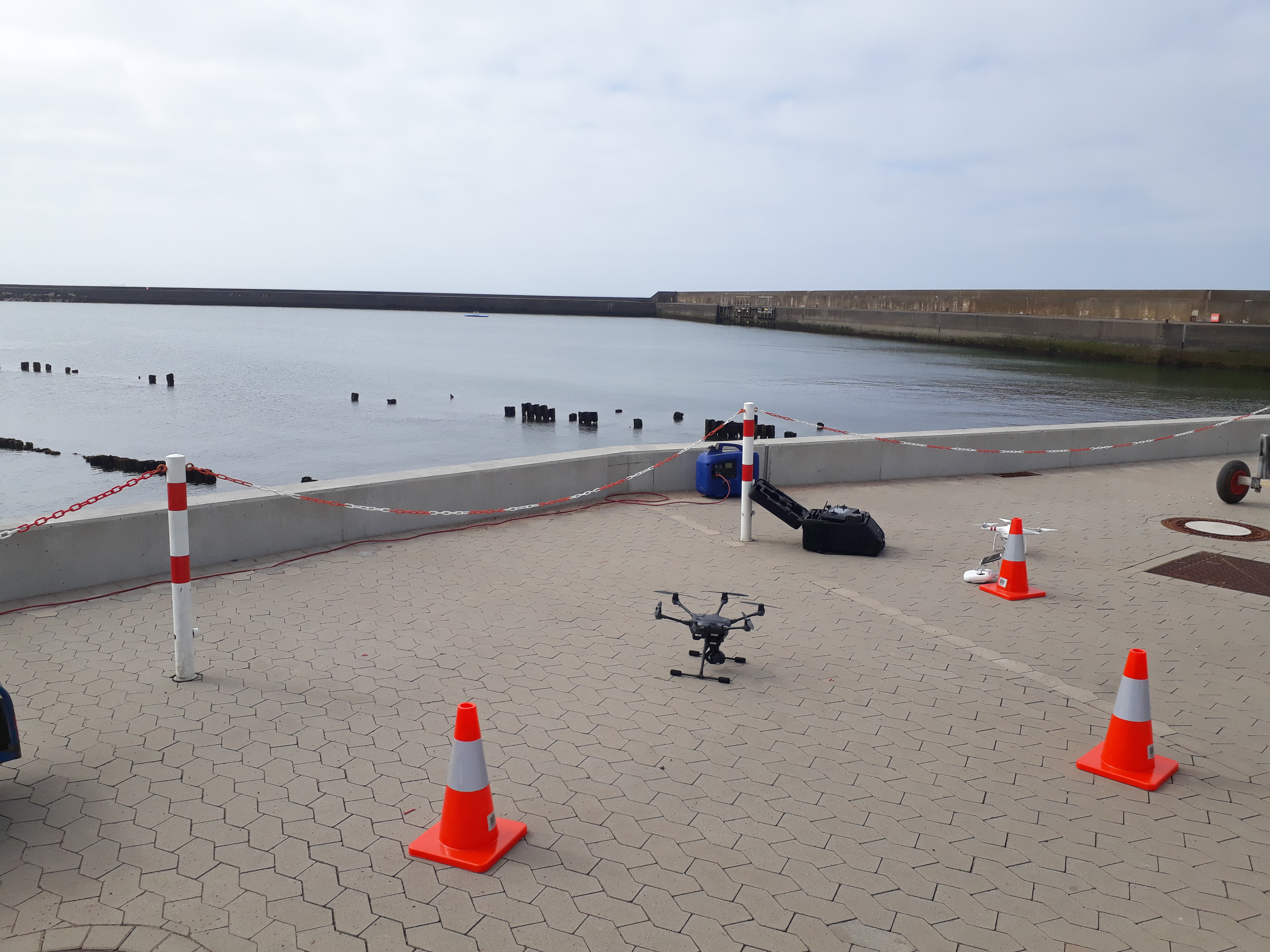How can drones and other mobile robotics be used for inspection, maintenance and repairs?
Whether it's inspecting the facade of a 20-story (high-rise) building/skyscraper or repairing a wind turbine blade –humans simply aren't made for some quality assurance tasks. In some cases, drones can take over this dangerous job from humans. In the future, they will be used more and more as tools and have the potential to perform their tasks completely autonomously. Fraunhofer IFAM is investigating different possible uses/use cases? of unmanned aerial and underwater vehicles in quality assurance – whether in inspection, maintenance, or repair.
The industrial use of robotics in the air or under water
For quality assurance in adhesive and surface technology, unmanned aerial systems or underwater vehicles can already be used in many areas. Because these systems capable of gaining access to hard-to-reach areas with relatively little effort – such as power poles, bridges, pipelines or wind turbines – they are an ideal tool for bringing measuring devices, or in the future other end-effectors, to the "scene of action." Especially, drones can be used effectively in quality assurance. As part of the Test Center for Maritime Technologiesat Helgoland, maintenance, inspection and servicing processes are being researched and tested using mobile robotics under offshore conditions.
Data acquisition, damage analysis and repair with drones
In addition to the technical requirements of unmanned aerial systems or underwater vehicles, the development of interfaces for fully automated data acquisition also represents an important challenge: within these "data pools" the damage history can be used to link the data with expert knowledge using e.g."machine learning" approaches and thus in turn realize independent damage analysis. However, there is also still a need for the development of technical procedures for measurement or repair in the case of drones. What most of today's applications have in common is that they are "non-contact". Docking the drone on the test object, such as the rotor blade of a wind turbine, and carrying out a measurement or even a repair is is still subject to research and development.
Project “TURBO": Icing protection of wind turbines with the help of drones
Icing of wind turbines is a major problem in the operation of the turbines, as it leads to massive yield losses, wear and tear and endangers people in the vicinity of the turbines. In the project "TURBO" (IGF project no. 21718 N) the application of a temporary icing protection by means of a drone is investigated. In addition to this specific application, the foundations are being laid for mobile coating devices in other applications. The work will focus on the interactions of drone flight (e. g. stability, positional accuracy, rotor downwind), robust application technology (e. g. weight, mechanism) and material properties (e. g. environmental compatibility, viscosity, anti-icing function).
Tim Strohbach is research associate at Fraunhofer IFAM in the department Quality Assurance and Cyber-Physical Systems and is responsible for the use of drones and mobile robotics with a focus on maintenance, inspection, and repair.
 Fraunhofer Institute for Manufacturing Technology and Advanced Materials IFAM
Fraunhofer Institute for Manufacturing Technology and Advanced Materials IFAM
